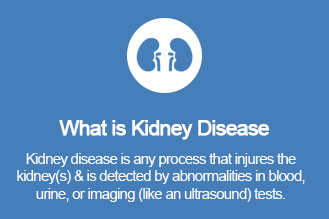[fullwidth backgroundcolor=”” backgroundimage=”” backgroundrepeat=”no-repeat” backgroundposition=”left top” backgroundattachment=”scroll” video_webm=”” video_mp4=”” video_ogv=”” video_preview_image=”” overlay_color=”” overlay_opacity=”0.5″ video_mute=”yes” video_loop=”yes” fade=”no” bordersize=”0px” bordercolor=”” borderstyle=”” paddingtop=”20px” paddingbottom=”20px” paddingleft=”0px” paddingright=”0px” menu_anchor=”” equal_height_columns=”no” hundred_percent=”no” class=”” id=””][three_fifth last=”no” spacing=”yes” background_color=”” background_image=”” background_repeat=”no-repeat” background_position=”left top” border_size=”0px” border_color=”” border_style=”” padding=”” class=”” id=””][fusion_text]
[/fusion_text][fusion_text]The kidneys are two organs located in your abdominal cavity on either side of your spine in the middle of your back, just above the waist. They perform several life-sustaining roles: They cleanse your blood by removing waste and excess fluid, maintain the balance of salt and minerals in your blood, and help regulate blood pressure.
When the kidneys become damaged, waste products and fluid can build up in the body, causing swelling in your ankles, vomiting, weakness, poor sleep, and shortness of breath. If left untreated, diseased kidneys may eventually stop functioning completely. Loss of kidney function is a serious — and potentially fatal — condition.
Healthy kidneys handle several specific roles. Healthy kidneys:
- Maintain a balance of water and concentration of minerals, such as sodium, potassium, and phosphorus, in your blood
- Remove waste by-products from the blood after digestion, muscle activity, and exposure to chemicals or medications
- Produce renin, an enzyme that helps regulate blood pressure
- Produce erythropoietin, which stimulates red blood cell production
- Produce an active form of vitamin D, needed for bone health
[/fusion_text][/three_fifth][two_fifth last=”yes” spacing=”yes” background_color=”” background_image=”” background_repeat=”no-repeat” background_position=”left top” border_size=”0px” border_color=”” border_style=”” padding=”” class=”” id=””][fusion_text] [/fusion_text][/two_fifth][/fullwidth][fullwidth backgroundcolor=”” backgroundimage=”http://www.kidneyrealtalk.com/wp-content/uploads/2015/07/1back-300×45.jpg” backgroundrepeat=”no-repeat” backgroundposition=”left top” backgroundattachment=”scroll” video_webm=”” video_mp4=”” video_ogv=”” video_preview_image=”” overlay_color=”” overlay_opacity=”0.5″ video_mute=”yes” video_loop=”yes” fade=”no” bordersize=”0px” bordercolor=”” borderstyle=”solid” paddingtop=”20px” paddingbottom=”20px” paddingleft=”0px” paddingright=”0px” menu_anchor=”” equal_height_columns=”no” hundred_percent=”no” class=”” id=””][separator style_type=”none” top_margin=”40″ bottom_margin=”” sep_color=”” icon=”” width=”” class=”” id=””][one_third last=”no” spacing=”yes” background_color=”” background_image=”” background_repeat=”no-repeat” background_position=”left top” border_size=”0px” border_color=”” border_style=”” padding=”” class=”” id=””][fusion_text]
[/fusion_text][/two_fifth][/fullwidth][fullwidth backgroundcolor=”” backgroundimage=”http://www.kidneyrealtalk.com/wp-content/uploads/2015/07/1back-300×45.jpg” backgroundrepeat=”no-repeat” backgroundposition=”left top” backgroundattachment=”scroll” video_webm=”” video_mp4=”” video_ogv=”” video_preview_image=”” overlay_color=”” overlay_opacity=”0.5″ video_mute=”yes” video_loop=”yes” fade=”no” bordersize=”0px” bordercolor=”” borderstyle=”solid” paddingtop=”20px” paddingbottom=”20px” paddingleft=”0px” paddingright=”0px” menu_anchor=”” equal_height_columns=”no” hundred_percent=”no” class=”” id=””][separator style_type=”none” top_margin=”40″ bottom_margin=”” sep_color=”” icon=”” width=”” class=”” id=””][one_third last=”no” spacing=”yes” background_color=”” background_image=”” background_repeat=”no-repeat” background_position=”left top” border_size=”0px” border_color=”” border_style=”” padding=”” class=”” id=””][fusion_text]
[/fusion_text][/one_third][one_third last=”no” spacing=”yes” background_color=”” background_image=”” background_repeat=”no-repeat” background_position=”left top” border_size=”0px” border_color=”” border_style=”” padding=”” class=”” id=””][fusion_text]
[/fusion_text][/one_third][one_third last=”yes” spacing=”yes” background_color=”” background_image=”” background_repeat=”no-repeat” background_position=”left top” border_size=”0px” border_color=”” border_style=”” padding=”” class=”” id=””][fusion_text]
[/fusion_text][/one_third][/fullwidth]



